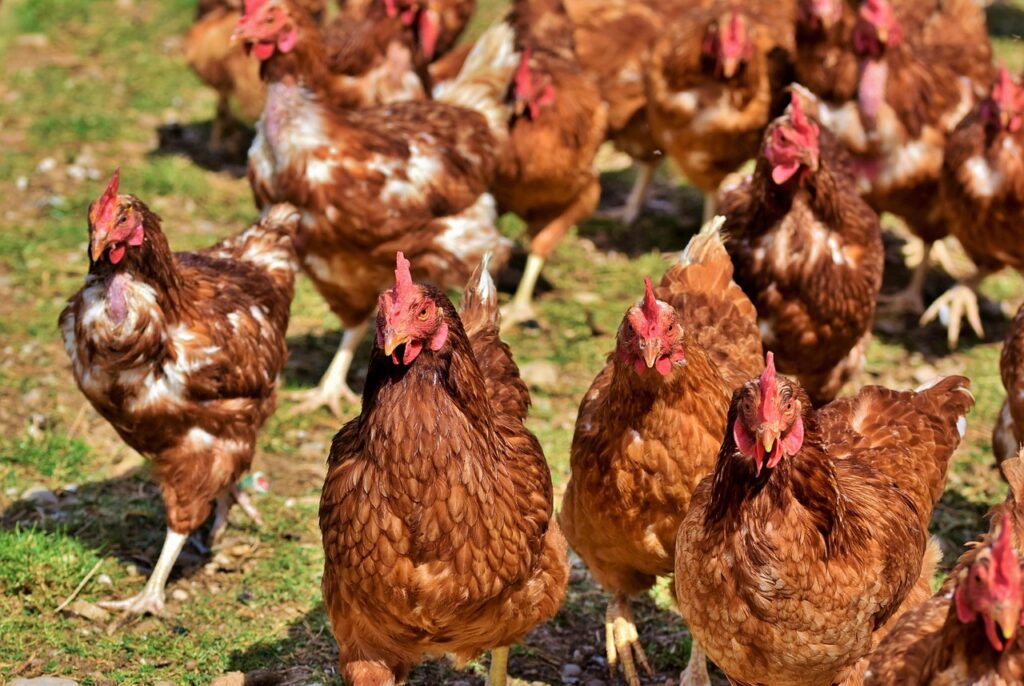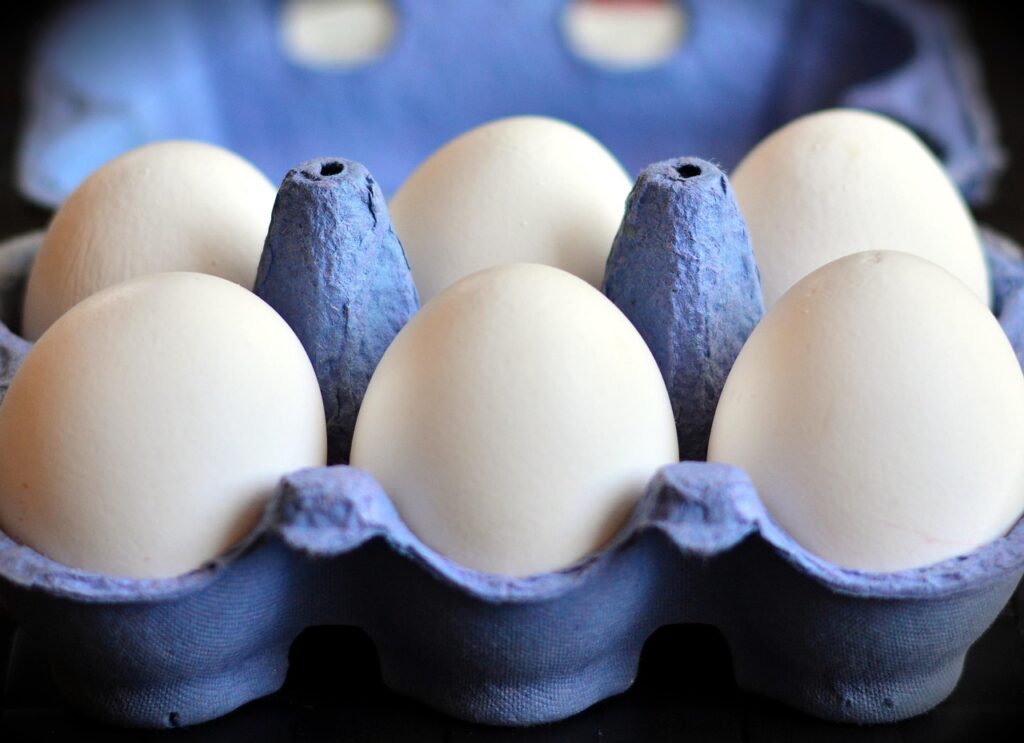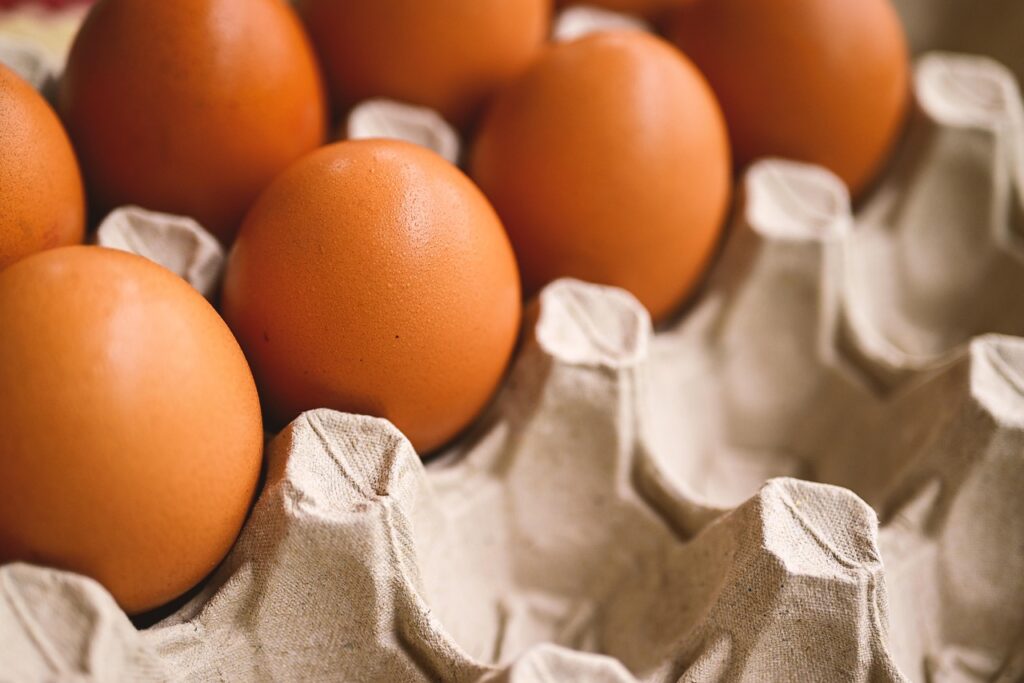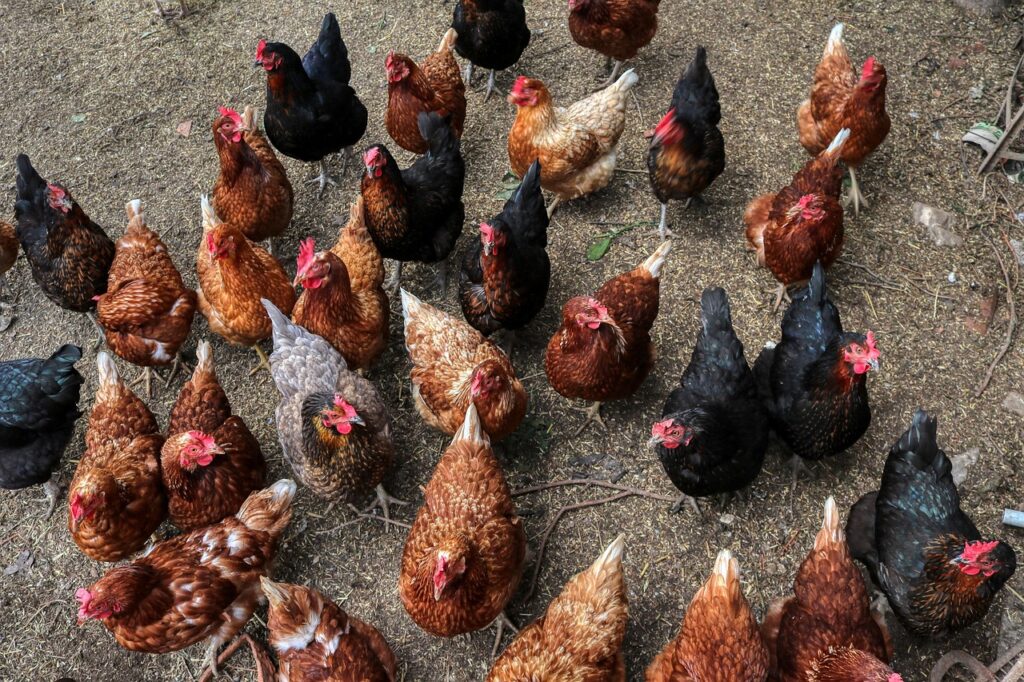Introduction to Chicken Breeds and Egg Colors
If you’re stepping into the backyard chicken world, get ready for a colorful surprise — quite literally. Chicken breeds and egg colors vary dramatically, from snow-white Leghorn eggs to deep chocolate Marans and even vibrant blues and greens from Easter Eggers. Choosing the right chickens isn’t just about aesthetics, though. Factors like temperament, egg production, and climate hardiness matter too.
Let’s crack open the most colorful part of chicken keeping!

Why Egg Color Varies: A Quick Science Lesson
Ever wonder why eggs come in different colors? It all starts with genetics. Every egg begins white inside the hen’s body. As it travels down the oviduct, pigments are deposited onto the shell. Two main pigments determine egg color:
- Protoporphyrin: Responsible for brown hues
- Oocyanin: Gives blue and green shades
Interestingly, blue pigment permeates the entire shell, while brown layers are only surface-deep — that’s why you can scrape it off in some cases.
What to Consider When Choosing a Chicken Breed
Before picking based on egg color alone, here are a few things to factor in:
- Climate Tolerance: Some chickens thrive in cold or hot climates.
- Egg Production: Do you want daily layers or ornamental birds?
- Temperament: Great if you’ve got kids or a mixed flock.
- Space Requirements: Heavier breeds need more room.
1. Ameraucana – The Blue Egg Layer
Ameraucanas are well-known for their striking blue eggs. They’re cold-hardy, sweet-natured, and quite curious.
- Egg Color: Blue
- Eggs/Year: ~180–200
- Temperament: Friendly, alert
- Fun Fact: Not to be confused with the Easter Egger!
2. Marans – Chocolate Brown Beauties
If you love rich brown eggs, the Marans are a must. Their eggs look like they’ve been dipped in cocoa.
- Egg Color: Dark chocolate brown
- Eggs/Year: ~150–200
- Temperament: Calm, quiet
- Top Pick: Black Copper Marans
3. Easter Egger – The Rainbow Layer
Easter Eggers aren’t a breed but a hybrid. They lay in a surprise palette of colors!
- Egg Color: Blue, green, olive, pink
- Eggs/Year: ~200–280
- Temperament: Fun, quirky
- Fun Fact: No two EEs look or lay exactly the same.

Image by congerdesign from Pixabay
4. Leghorn – The Classic White Egg Producer
If productivity is key, go Leghorn. These commercial stars lay tons of white eggs.
- Egg Color: Bright white
- Eggs/Year: ~280–320
- Temperament: Active, flighty
- Trivia: Bugs Bunny’s Foghorn Leghorn is based on this breed!
5. Plymouth Rock – Dual-Purpose Charm
An all-American favorite, Plymouth Rocks are excellent layers and great meat birds too.
- Egg Color: Light brown
- Eggs/Year: ~200–250
- Temperament: Docile, family-friendly
- Also Known As: Barred Rock
6. Welsummer – Speckled Brown Egg Delight
Welsummers lay medium to dark brown eggs with lovely speckles. They’re friendly and attractive.
- Egg Color: Speckled brown
- Eggs/Year: ~160–200
- Temperament: Alert, gentle
- Famous For: The Kellogg’s rooster is a Welsummer!
7. Olive Egger – Unique Green Eggs
These trendy hybrid hens produce beautiful olive-green eggs, resulting from crossing dark and blue layers.
- Egg Color: Olive green
- Eggs/Year: ~180–200
- Temperament: Varies by cross
- Note: Great for colored egg baskets!
8. Sussex – Gentle Temperament, Creamy Eggs
Sussex chickens come in several color varieties and are excellent backyard companions.
- Egg Color: Light brown to cream
- Eggs/Year: ~200–250
- Temperament: Very friendly, inquisitive
- Bonus: Excellent foragers
9. Barnevelder – Deep Brown Eggs with a Glossy Finish
These Dutch beauties are known for their laced feathers and shiny, dark eggs.
- Egg Color: Glossy dark brown
- Eggs/Year: ~150–200
- Temperament: Calm, consistent
- Highlight: Great choice for ornamental flocks
10. Australorp – Productive Layers of Brown Eggs
An Australian gem, the Australorp is a record-breaking egg layer with a calm demeanor.
- Egg Color: Light brown
- Eggs/Year: ~250–300
- Temperament: Docile, quiet
- Fun Fact: One hen laid 364 eggs in 365 days!
11. Ancona – White Egg Layers with Style
These Mediterranean birds are flashy and efficient.
- Egg Color: White
- Eggs/Year: ~200–220
- Temperament: Active, alert
- Ideal For: Warm climates
12. Cream Legbar – Blue Eggs with a Twist
A stylish crested breed that gives Ameraucana a run for its money in the blue egg department.
- Egg Color: Sky blue
- Eggs/Year: ~200–250
- Temperament: Intelligent, active
- Highlight: Auto-sexing chicks

Image by Erika Varga from Pixabay
13. ISA Brown – Consistent Brown Egg Layers
A favorite among urban chicken keepers, ISA Browns are hybrid laying machines.
- Egg Color: Medium brown
- Eggs/Year: ~300–320
- Temperament: Sweet, affectionate
- Pro Tip: Great for beginners!
14. Brahma – Gentle Giants with Light Brown Eggs
These feather-footed giants are winter-hardy and great foragers.
- Egg Color: Tinted/light brown
- Eggs/Year: ~150–200
- Temperament: Calm, easygoing
- Known As: “The King of Chickens”
15. Silkie – Tiny Tinted Eggs, Big Personality
Don’t expect high volume, but Silkies make up for it in personality and fluff!
- Egg Color: Cream/tinted
- Eggs/Year: ~100–120
- Temperament: Very docile, even cuddly
- Bonus: Great brooders
FAQs
1. Do egg colors affect taste or nutrition?
Nope! Egg color is purely aesthetic. Taste and nutrition depend on the hen’s diet and health.
2. Can one chicken lay different colored eggs?
No. A single hen will lay one color her whole life based on her genetics.
3. What breed lays the most eggs per year?
ISA Browns and Leghorns are top-tier layers, producing up to 320 eggs annually.
4. Are colored eggs more expensive to raise?
Not really. Some fancy breeds might cost more initially, but feed and care are the same.
5. Can you mix breeds in a backyard flock?
Yes! Most breeds get along well, especially if introduced properly.
6. How long do chickens lay eggs?
Most hens lay actively for 2–3 years but can produce eggs (less frequently) for up to 7 years.

Image by Alexander Fox | PlaNet Fox from Pixabay
Conclusion
Chicken breeds and egg colors add fun, beauty, and variety to any backyard flock. Whether you’re chasing blue eggs, rich browns, or friendly feathered companions, there’s a perfect match waiting for you. Remember, it’s not just about the eggs — it’s about the experience, too.
